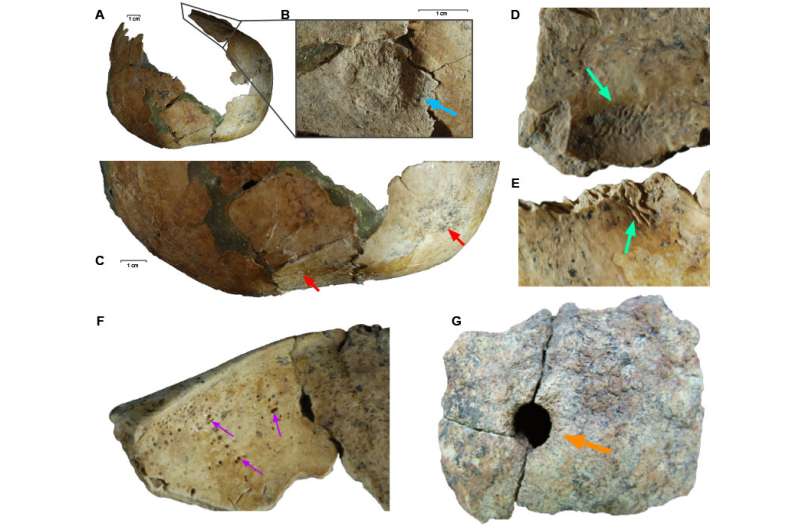November 7, 2022 report
Genetic analysis of Neolithic people from Mesopotamia shows blend of demographics

A team of researchers affiliated with multiple institutions in Turkey, working with one colleague from Austria and two from Sweden, has found evidence via genetic analysis of a blend of demographics in Neolithic people living in the Upper Tigris portion of Mesopotamia. In their paper published in the journal Science Advances, the group describes how they extracted tissue samples from the remains of people buried in Çayönü Tepesi from the period 8500–7500 BCE.
Upper Mesopotamia was a region between the Tigris and Euphrates rivers in what is now Turkey and Iran. Researchers believe the region played a major role in the Neolithic Transition, when people began to transition away from a hunter-gatherer lifestyle to one based on agriculture. It was also a time of many other cultural changes.
For many years, historians have wondered if the shift in Mesopotamia came about due to the efforts of locals who lived there, or if it was a melting pot of sorts with ideas coming from people from many different places. To answer that question, the researchers conducted a genetic analysis of the DNA of 13 people who lived and died during that time and were buried in a way that preserved some of their tissue—two adult men, six adult women, two male children and three female children.
By comparing the samples via multidimensional scaling to the genomes of others from nearby regions, they found evidence that the people had blended backgrounds—they had a three-way admixture of people from South Levant, Central Anatolia and Central Zagros.
There was also an exception—one of the women had a Caucasus/Zagros background. This showed that there was migration into the region of people from much farther north, and perhaps other areas as well. The researchers also found that one of the children, a toddler, had experienced intentional skull shaping and cranial cauterization—the latter of which might have been part of a medical procedure.
The researchers suggest that the Upper Tigris portion of Mesopotamia during the Neolithic era was likely a vibrant hub with people coming and going, bringing with them both goods and culture.
More information: N. Ezgi Altınışık et al, A genomic snapshot of demographic and cultural dynamism in Upper Mesopotamia during the Neolithic Transition, Science Advances (2022). DOI: 10.1126/sciadv.abo3609
Journal information: Science Advances
© 2022 Science X Network



















